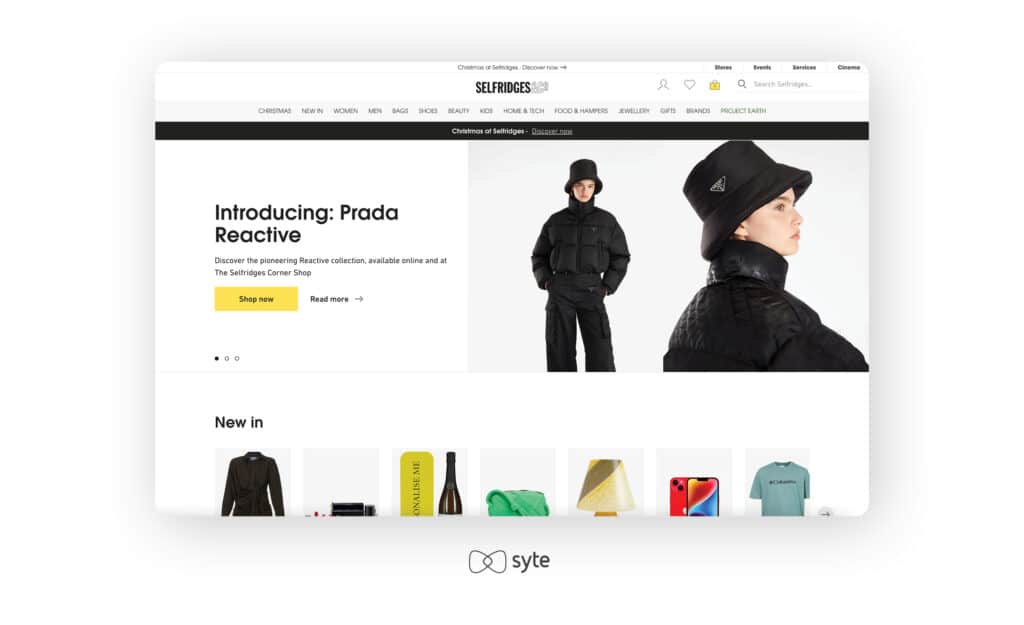Small to medium enterprises (SMEs) must scale to boost their competitive edge and gain new market opportunities. But scaling without resources is a bit of a chicken and egg problem. To grow you need to invest in people, technology, infrastructure, and processes, but to invest you need capital. Brands that scale effectively know it’s a balancing act. They must use every tool at their disposal to increase revenues at a faster rate than accruing costs.
Growing businesses should begin by investing in areas that provide the maximum return on investment (ROI) in terms of human resources and finances. There are a number of strategies companies can employ, including automating costly internal processes, maximizing marketing efforts at little to no cost, boosting product development efforts, and adapting eConcession models.
Read on for our guide to scale your growing online business.
Adapt User-Generated Content for Social Proof
Brands and retailers can expand marketing efforts without increasing budgets by leveraging user-generated content (UGC). UGC takes social commerce to the next level by showcasing IRL (In Real Life) content, which speaks to the growing demand for authenticity from younger generations.
Seventy-nine percent of people say that UGC could influence their purchase decision, which makes UGC a must-have in your marketing toolbox. There are creative ways to monetize existing social content and increase ROI from influencer campaigns. For example, visual AI can be used to recommend products that other customers have already purchased by displaying authentic photos and videos from those customers on a product detail page (PDP). It’s a way of making social inspiration shoppable.
Social content isn’t limited to photos, however, you can also encourage customers to leave reviews and comments. This gives other shoppers a better idea of the fit, quality, and comfort of a specific item. Real reviews by real people have a knock-on effect on reducing returns and increasing a brand’s bottom line because buyers will be more informed and have a better idea of the products they intend to purchase.

Listen to Your Audience
Building upon UGC, brands can refer to reviews and comments to gauge what is and isn’t working with their product offering. This opens up opportunities to involve consumers in the product development cycle and make improvements that better align with what a brand’s customer base is looking for.
Surveys, social media Q+As, “This or That” and “Would You Rather” polls are also great ways to gather customer opinions and adapt products to consumer tastes and preferences. Surveys and polls are low-cost strategies for product development teams to gain high-level insights and reduce long-term costs. They also drive revenues because the offering will be adapted to consumer demand and what is most likely to sell.
Explore an eConcession Model
eConcession models are on the rise and have many benefits for growing businesses. With eConcessions, a retailer doesn’t own, hold, or ship products, but only provides an online space for brands to merchandise and sell their items. The revenue brands earn is typically higher than in a wholesale model, while retailers’ revenue is lower.
eConcessions are a breakthrough for emerging businesses that may lack the resources to open their own eCommerce stores. They enable brands to leverage existing tech from established retailers, which is useful for small development teams with insufficient resources to implement advanced technologies.
An eConcession model enables brands to boost their digital touchpoints with customers and exercise more control over data, merchandising, imagery, pricing, and the product catalogue. All in all, eConcessions are a low-cost business strategy with higher ROI and can work to raise brand awareness beyond an existing customer base.

Up Your Mobile UI/UX Game
According to research from Syte’s “The State of eCommerce Discovery in 2022” report, browsing and shopping on mobile are on the rise across the fashion, jewelry, and home decor verticals, although spending remains higher on desktop. This presents an opportunity for brands and retailers to ensure mobile shoppers can easily navigate from page to page, find all the items they’re interested in, and check out in a trusted environment.
The placement, configuration, and user interface of site menus, search, and product recommendations on mobile screens will become critical for closing the engagement and spend gap between mobile and desktop fashion shoppers. If your eCommerce shop is already optimized for desktop, take the extra step to make sure shopping is user-friendly on mobile screens.

Automate Internal Processes
Investing in the right technology early on will enable you to automate your product tagging to make the most of your resources and prevent human error. Product tagging is typically completed manually by entering one attribute at a time in a database. The tedious process takes up time and energy especially when a brand or retailer has thousands or millions of products.
Automated product tagging powered by visual AI harnesses deep learning, neural networks, and advanced image recognition algorithms to generate metadata based on visual attributes. This saves valuable resources for brands and retailers and helps with SEO, which is the key to generating organic traffic.
Automated tagging also helps with predicting supply and demand and preventing both overstock and out-of-stock scenarios by providing brands with deep insights into product performance. This aligns with customer preferences and drives down the costs of shipping and holding low-demand products or losing out on sales because of limited stock availability.
Wrap-Up
Scaling while making the most of existing resources comes in many forms. Smaller businesses can begin by showcasing IRL (In Real Life) content, encouraging user reviews, and polling their audience for insights to inform product development and make the most of marketing budgets.
Automated product tagging is also a surefire way to increase efficiencies and improve data analysis, trend forecasting, and SEO efforts. eConcessions provide a segue for brands to expand their reach into new markets and create a digital touchpoint with a wider customer base, while optimized mobile experiences better connect with the burgeoning audience of shoppers beyond desktop screens.